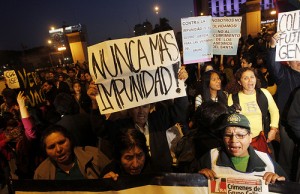By Pearl Rimon,
Impunity Watch Reporter, Europe
BRUSSELS, Belgium — The Council of Europe appointed Stavros Labrinidis as the EU Special Representative for Human Rights. Labrinidis’ new role puts him in charge of enhancing the effectiveness and visibility of the EU human rights policy. He will work with the European External Action Service. He begins his official role on September 1st, which runs until June 2014.

Labrinidis is the former minister of foreign affairs of Greece and a Vice President of the European Parliament. His appointment is a result of the EU’s Strategic Framework and Action Plan on Human Rights and Democracy that was adopted on June 25.
EU foreign affairs chief Catherine Ashton announced the appointment in Brussels today. “Human rights are one of my top priorities and a silver thread that runs through everything that we do in external relations,” she said. “With his talent and huge experience, Mr. Lambrinidis will be a tremendous asset to us. I look forward to working with him in putting the protection and promotion of human rights and democracy at the heart of EU external action, and enhancing the coherence, effectiveness and visibility of our work in this field.”
Labrinidis was chosen ahead of French human rights ambassador François Zimeray and Astrid Thors of Finland, a former European affairs minister. The Council of Europe said the role had been created to “enhance the effectiveness and visibility of EU human rights policy.”
Lambrinidis’ past experience includes being deputy chairman of Parliament’s civil liberties, justice and home affairs committee. He was also the chairman of the committee for human rights in the Washington DC Bar Association.
Dany Cohn-Bendit, co-president of the Greens/European Free Alliance Grup in the Parliament, said “The creation of this new post is an important signal of the priority the EU gives to the promotion of and respect for human rights, democracy and the rule of law.”
Labrinidis’ role requires him to be the voice for those who suffer from human rights violations. Barbara Lochibler, chair of the Council of Europe’s human rights subcommittee describes the appointment described Labrinidis; new role, “The Special Representative must be a reliable voice for the people who suffer human rights violations. He should keep an eye on the bilateral and multilateral relations of the EU and monitor the implementation of human rights with international partners: in foreign and economic policy as well as in development cooperation. Last but not least, there must be coherence between the EU’s internal and external policies as regards human rights.”
For further information, please see:
New Europe — EU Appoints Human Rights Chief – 26 July 2012
European Parliament — MEPs congratulate new EU human rights envoy, Stavros Lambrinidis – 25 July 2012
Public Service Europe — Labrinidis Appointed EU’s First Human Rights Envoy – 25 July 2012


